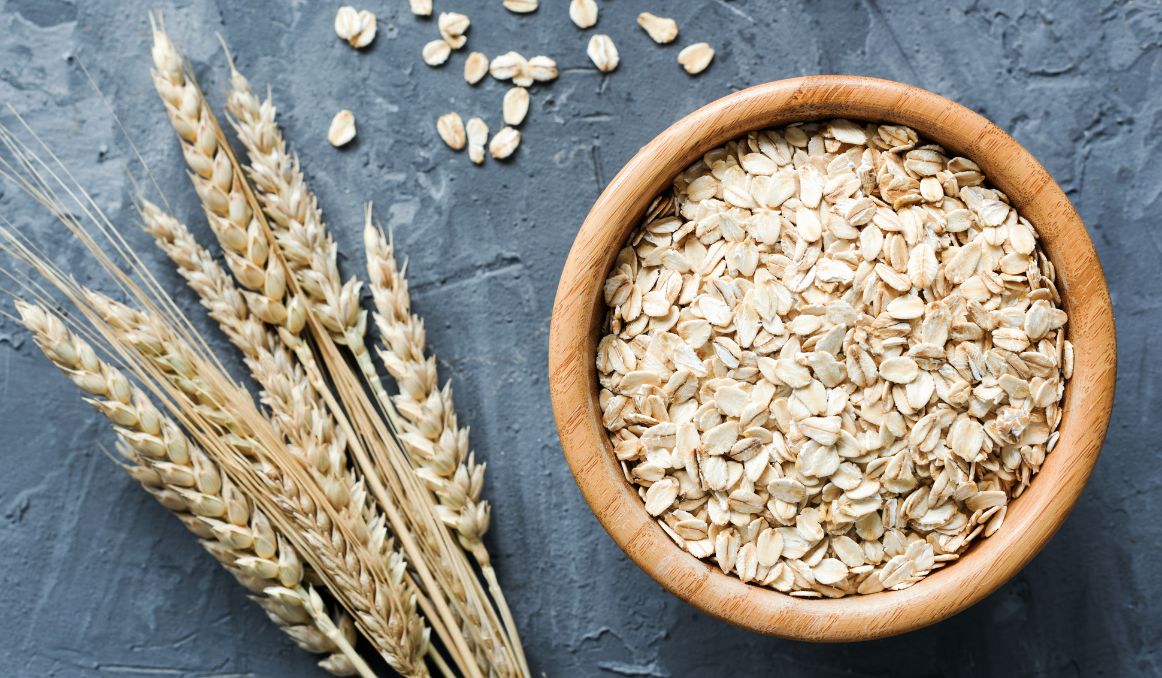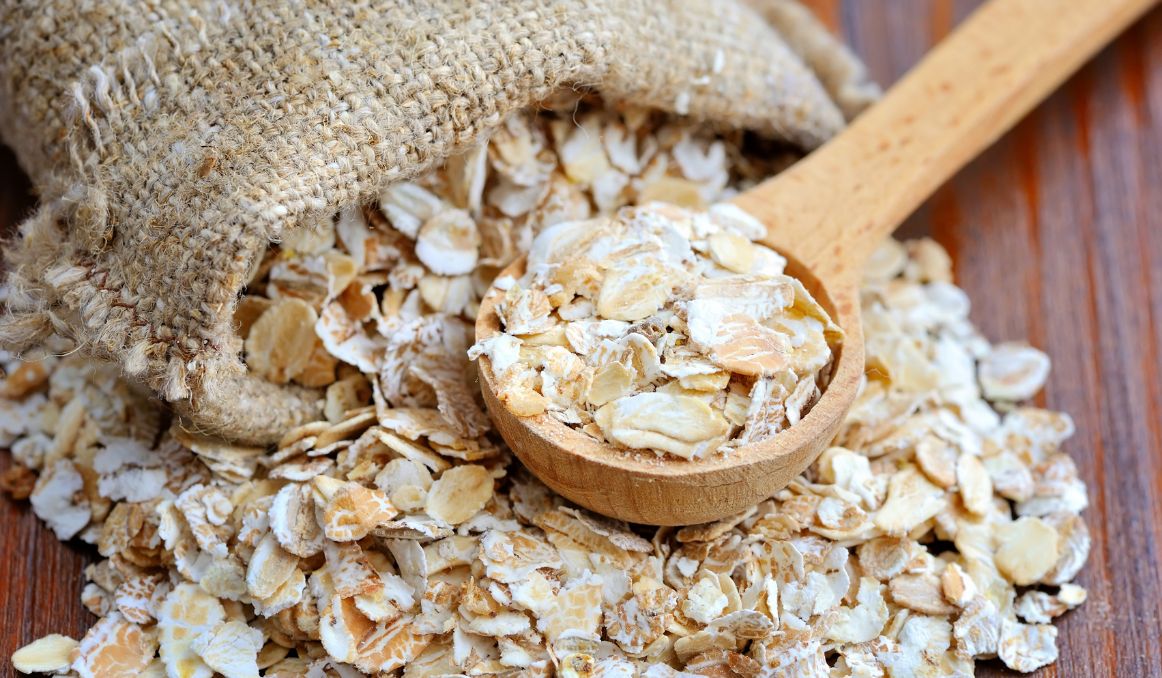Making Beer from Oatmeal: The Details
Anyone who has ever enjoyed an oatmeal stout on a brisk fall day knows that you can absolutely make beer from oats, and that making beer from oatmeal is really not that complicated.
Indeed, just like you can make wine from pretty much any fruit, you can make beer from pretty much any grain. And oats are indeed a grain.
The real question is how do you do it? And the next natural question is why would you?
Beer Is Just Drunk Grain

It sounds silly, but it’s true.
Beer is just drunk grain. Or, better understood, fermented grain. That’s it.
The brewing process is one of the oldest and most healthful processes in the world of food production beyond simply picking fruits and nuts and hunting for meat.
As the legend goes, a woman gathering grain for her family must have left the grain out in the rain and got distracted for days. Maybe there was a huge storm, one of her kids got sick or maybe she was just tired. (All parents out there will get this last one.)
In any event, when she returned, she had a container full of wet grain. Too conscious of food waste to toss the grain or the liquid, she served both to her family.
Lo and behold the first beer was born – a slightly alcoholic, preserved, nutritious drink safe for the family to drink with the meal. The wet grain could be converted to dough and baked into bread.
Ale and bread. Now everyone is happy!
Beer really is as simple as that.
Making Beer
To make beer, all you need is a grain and water.
Sure, we can get fancy and roast, or kiln, the grain first. This process today is called malting and it allows the starches in the grain to get more sugary.
We can crack our grain open to expose those sugars.
But beyond that, it is really just a matter of boiling the grain in water to release all the sugars and starches into the liquid, and then leaving the liquid (now called wort) exposed for wild yeast to do its work.
As yeast is literally everywhere at all times, it will find the sugary liquid and get busy converting the sugars to alcohol, carbon dioxide, and hundreds of other micronutrients, chemical compounds, and flavor and aroma profiles.
Today, brewers add their own yeast and work hard to prevent any “wild” yeast or bacteria from entering the liquid so as to have a predictable and consistent brew.
But the rest of the process remains much the same as it was when our ancestors brewed batches of ale for family meals.
Oats in Beer

The only difference, then, is in the grain.
Barley and wheat are most common in beer, but that is likely because they are simply easy to grow and more widely available than oats. They also offer a milder flavor than oats, which are thicker and creamier in both taste and texture.
Think of the difference between an oatmeal cookie and a wheat cracker.
Making beer with oats would be the same process. And making beer from oatmeal is really not a far leap.
All you would need to do is prepare your oatmeal as you normally would, boiling your oats in water and then allowing it to cool. Then simply leave your oatmeal in a container covered with cheesecloth to prevent bugs and other solid contaminants to enter.
You can either add your own yeast or allow wild yeast to find your oats.
Another option is to add sugar to the oatmeal to ensure the fermentation process take place smoothly and produces your desired alcohol content. Without added sugar, you may end up with a low alcohol content beer, much like the one our ancestors made.
To Malt or Not to Malt?
One question that arises frequently is whether to malt your oats before brewing them.
Remember that malting your oats makes them more capable of releasing their sugars. Without proper sugar, your yeast will have a tough time making alcohol. You can always add sugar instead, but it would be much better if you had some of the oats’ natural sugars in there to ferment.
You can start with steel cut oats or flakes, either will do, and then malt, roast, or kiln them yourself, or buy already malted oats.
Then, make sure to crack your oats once they’ve been malted to expose the sugars inside for the yeast.
From there, you just boil, steep, and ferment.
The final step in most beer is to add hops. With an oatmeal beer, you want a low to moderate bitterness level as you want to maintain the thick rich sweet quality of the oats. But, as with most brews, you should experiment and see what works for your particular process.
Benefits of Brewing with Oats
In the end, brewing with oats is not only an option, but it is a much more beneficial option than barley or wheat as oats come with myriad health advantages.
Oats alone offer manganese, zinc, copper, iron, magnesium, folate, and Vitamin B1 and B5.
Those vitamins and minerals provide numerous nutritious benefits.
They help lower cholesterol levels, improve blood sugar, and aid in weight loss.
Oats are full of fiber and antioxidants.
And it is interesting to note that fermenting oats not only does not eliminate any of these benefits, but it in fact may amplify them in addition to making them a probiotic, which is good for your gut health.
And gut health is linked to total wellness in more ways than we can include in this article.
So, long story short, yes you can make beer from oatmeal, and indeed, yes you should! It is not only good for you and an easy process to follow, but it is, in a word, delicious.
Cheers!
Are you still pitching fresh yeast every time? By reusing your yeast, you can save up to hundreds of thousands of dollars per year on just yeast alone!
Join the hundreds of brewers from all around the world using the smartest Automated Yeast Cell Counter! Request a Free Demo Account today and experience firsthand how Oculyze can take your brewery to the next level!
Sources:
- https://byo.com/article/brewing-with-oats/
- https://homebrewanswers.com/oatmeal-pale-ale-recipe/
- https://www.healthline.com/nutrition/9-benefits-oats-oatmeal
Stay on top on important fermentation insights – subscribe to our monthly newsletter and receive a hand-picked selection of our most relevant articles straight to your inbox.
Never miss a beat and get real time updates with a new article each workday by subscribing our social media channels.
Instagram | Facebook | Twitter | YouTube


